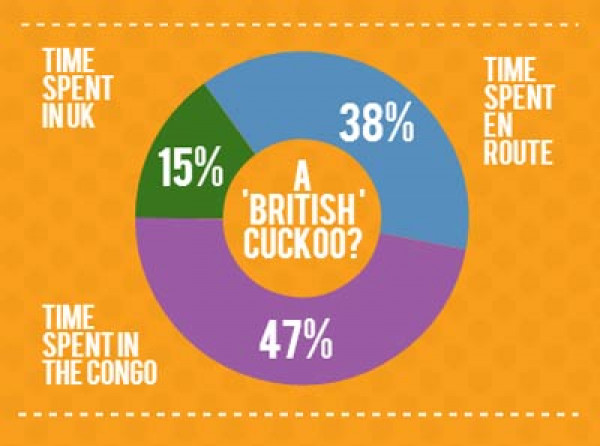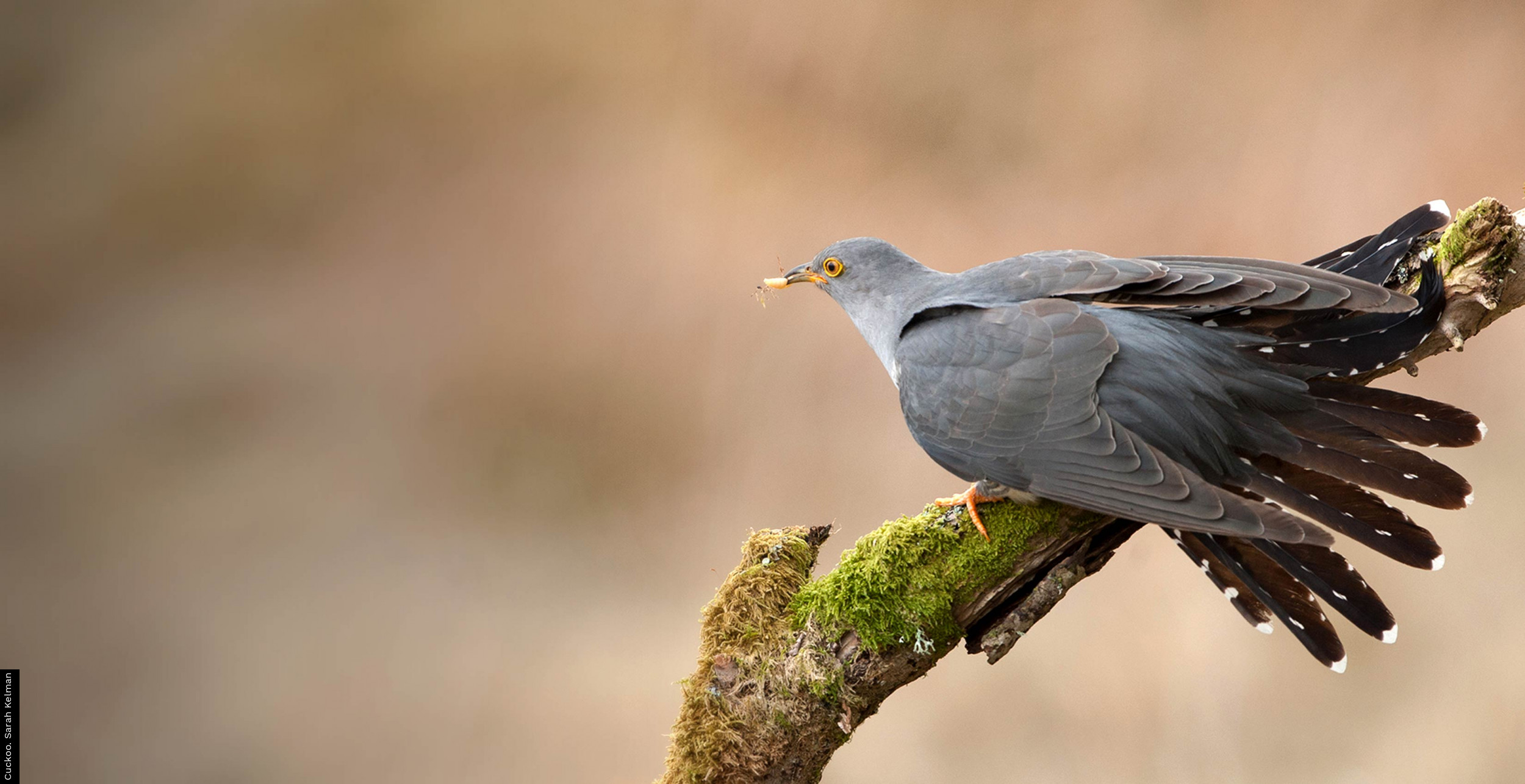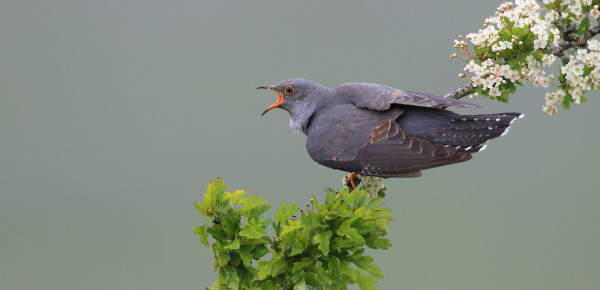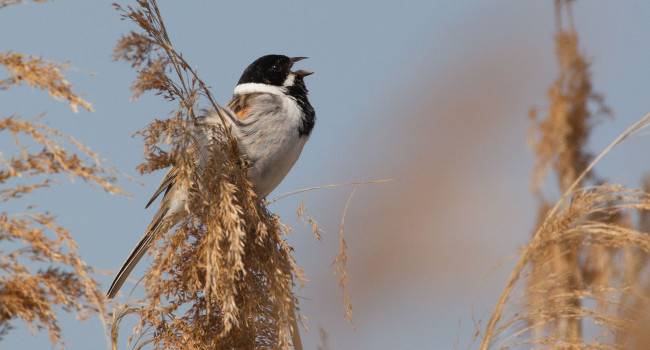What we have learnt so far
After 12 years and over 100 birds tagged, we have learnt a huge amount about Cuckoo migration and the risks and challenges that these amazing birds face. It is clear these challenges vary between years; by continuing this project we aim to understand how these birds are affected by long-term environmental variation.
Survival and population declines
Cuckoo numbers are declining in the UK, albeit with marked regional variation. There is no evidence that this is due to reduced numbers of young Cuckoos being produced; although data on productivity is limited, studies have found no evidence that the availability of host species, such as Reed Warbler and Meadow Pipit, is driving these declines. One of the aims of the BTO Cuckoo Project is, therefore, to understand what drives the mortality rates of adult Cuckoos. Knowing where and when tagged Cuckoos die is as important as knowing where they go.
Across the first four years of the project, we found that Cuckoos migrating via Spain were much more likely to die before they reached sub-Saharan Africa than those migrating via Italy. We also found that the birds using the Spanish route came from those parts of the UK where the species is declining, and that the proportion of Spanish-route birds in local populations correlated with the degree of recent population decline seen in the region.
In the last four years we have concentrated on tagging birds from the parts of England where both birds migrating via Italy and those migrating via Spain are found. We hope to understand what is driving the differences in survival we have seen and to determine whether it persists in the long term. Using the data collected, we can assess the impact on these two groups of birds of conditions in the UK and on stop-over sites in southern Europe.
In future years, we hope to have more and cheaper tags available. We will then add to this by tagging further birds in Wales, Scotland and northern England – parts of the UK where only birds migrating via Italy have so far been found. Comparing survival rates of the tagged birds with the environmental conditions recorded along the flyway, for both birds breeding in parts of the UK where the population is declining and those where it is stable or increasing, will help us to further understand the causes of decline.

Uncovering the annual cycle
We have discovered that Cuckoos leave the UK much earlier than previously thought. The earliest departure date so far recorded for our tagged birds has been 3 June, but in each year over 50% of our tagged Cuckoos have left the country by the end of June, much earlier than expected.
We’ve found that male Cuckoos arrive in Britain towards the end of April or beginning of May and many leave again during June. This means that male Cuckoos only spend a small percentage of the year here. Chris the Cuckoo, who was tagged in 2011 and perished in 2015, spent roughly 47% of his time in Africa, 38% of his time on migration and just 15% in Britain! Our tracking study has shown that Cuckoos are truly African birds which make a short and dangerous excursion to northern climes, purely for the purposes of breeding.
Two main migration routes
Stopover sites are important fuelling areas for migrant birds, often rich in food which allow birds to fatten up for the journey ahead. Many of our Cuckoos have spent time near the River Po in Italy, confirming this is a very important fattening site for British Cuckoos which allows them to cross the Mediterranean and, subsequently, the Sahara Desert.
This migration route through Italy was predicted from ringing data, which showed that some birds breeding in England leave the UK in a south-easterly direction. Other birds stopover in Spain, before entering Africa at the far western end of the continent. There had been no hint of this western route from ringing data – BTO had never even had a ringing recovery of a Cuckoo west of its ringing location! We are currently working to understand why these two routes occur within the same breeding populations.
Read a summary of our findings so far regarding Cuckoo migration routes.
African wintering and stopover sites
Cuckoos tagged in the UK spend the winter in central Africa. For the first time, this project has allowed us to follow Cuckoos to their wintering grounds which are mainly in and around the Congo rainforest (in DRC, Congo or Gabon) and in similar habitat as far south as Angola. These habitats have not yet been extensively cleared and, as the Cuckoos prefer forest edges rather than vast tracks of unbroken forest, a moderate degree of opening up may actually benefit them. Without knowing which habitats they occupied in the past, however, it is difficult to be certain.
In spring, all of our Cuckoos cross the Sahara from previously unknown stopover sites in West Africa. It had been formerly supposed that Cuckoos crossed the Sahara in a mammoth flight direct from their wintering locations all the way to North Africa or southern Europe, so this stopover, and the dogleg migration into West Africa that its use entails, was highly unexpected. Our research has shown that this stopover location is a crucial to understanding the conservation needs of this species. We now know that Cuckoos are unable to advance the timing of their spring migration to keep pace with northern hemisphere springs, which are starting ever earlier due to climate change. This is because Cuckoos depend on the flush of invertebrate prey brought about by rains in their West African stopover sites to fuel their northward journeys. The timing of these rains is not altering with climate change, meaning Cuckoos are becoming increasingly out of sync with prey availability on their breeding grounds and the timing of breeding of their host species. Similar limitations could apply to the Swift – a species with a similar spring migration route, which is also undergoing severe population declines, and is also failing to advance its spring arrival dates in the UK in line with earlier springs.

Why continue to tag Cuckoos?
Short-term studies can also give misleading results – for example the habitats that were used in the Congo basin by English and Scottish Cuckoos in the first two years are not the same habitats being used in later years. Tagging more birds, and over a greater number of years, gives us more power to examine survival and the effects of environmental conditions, including longer-term changes. In particular, we will soon be in a position to robustly estimate survival for different seasons, all the way through the annual cycle; until now, the sample of birds later in the year has been too small for this. Similarly, the sample of birds tracked on spring migration will soon be large enough to allow us to look at what determines the timing of their arrival back in the UK.
In the future we hope to use cheaper tags with GPS accuracy. This will allow us to carry on looking at everything we have been examining so far, but it will additionally allow us to look at the habitat use and behaviour of the birds at different annual cycle stages. When smaller tags become available in the future, we will begin to tag females to determine whether their migrations differ for males, including whether the ‘host race’ they belong to has any bearing on the timing of their migration.
Support the project
If you would like to help support and develop the project, you could become a Cuckoo sponsor for as little as £10. You will receive email updates on the Cuckoos' progress. Find out more about Cuckoo sponsorship.
The information gathered as part of this project will be vital in informing the conservation of the Cuckoo in the UK.
Sponsor a Cuckoo







Share this page